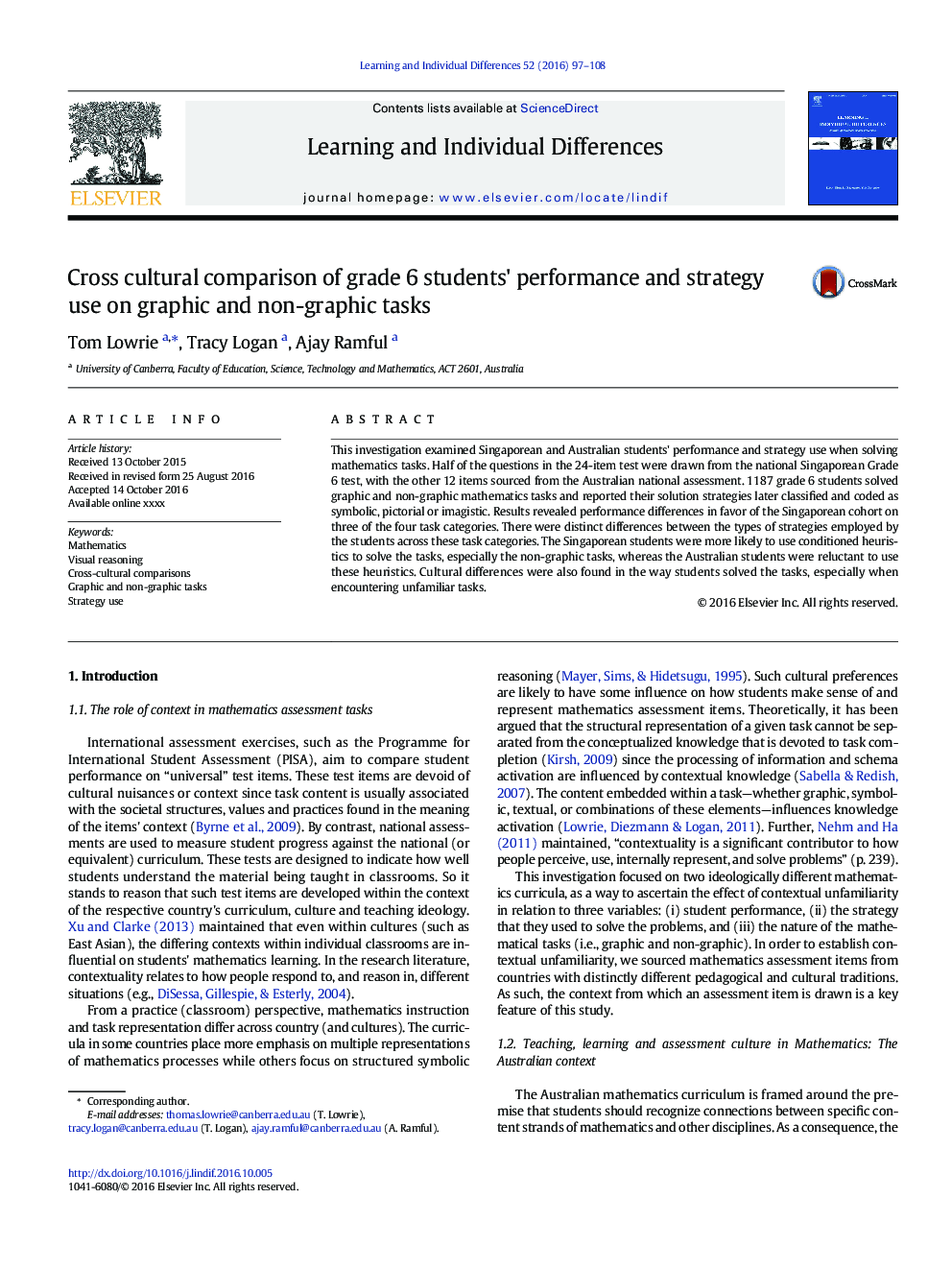| Article ID | Journal | Published Year | Pages | File Type |
|---|---|---|---|---|
| 4940073 | Learning and Individual Differences | 2016 | 12 Pages |
Abstract
This investigation examined Singaporean and Australian students' performance and strategy use when solving mathematics tasks. Half of the questions in the 24-item test were drawn from the national Singaporean Grade 6 test, with the other 12 items sourced from the Australian national assessment. 1187 grade 6 students solved graphic and non-graphic mathematics tasks and reported their solution strategies later classified and coded as symbolic, pictorial or imagistic. Results revealed performance differences in favor of the Singaporean cohort on three of the four task categories. There were distinct differences between the types of strategies employed by the students across these task categories. The Singaporean students were more likely to use conditioned heuristics to solve the tasks, especially the non-graphic tasks, whereas the Australian students were reluctant to use these heuristics. Cultural differences were also found in the way students solved the tasks, especially when encountering unfamiliar tasks.
Related Topics
Social Sciences and Humanities
Psychology
Developmental and Educational Psychology
Authors
Tom Lowrie, Tracy Logan, Ajay Ramful,
